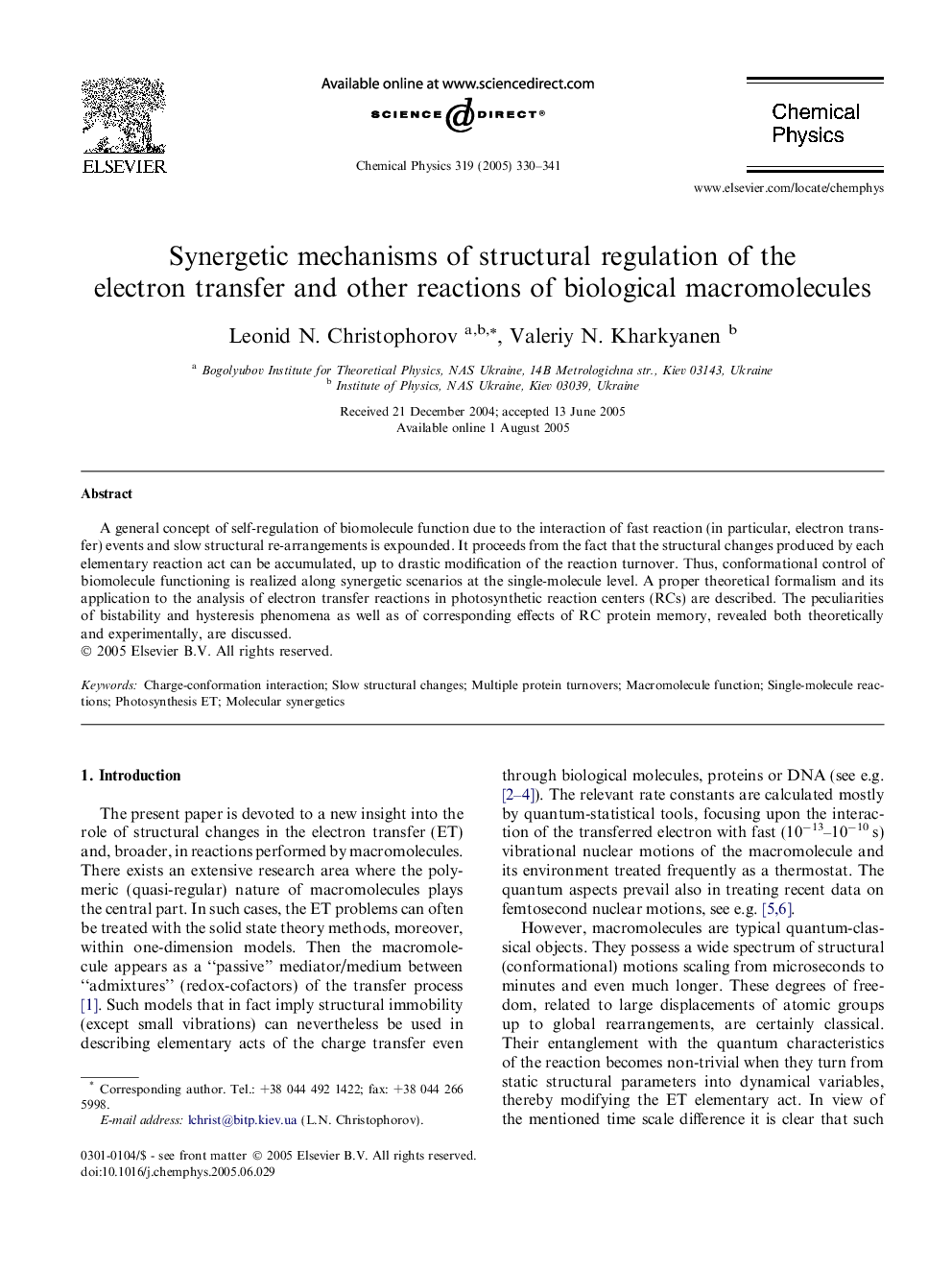| Article ID | Journal | Published Year | Pages | File Type |
|---|---|---|---|---|
| 9575163 | Chemical Physics | 2005 | 12 Pages |
Abstract
A general concept of self-regulation of biomolecule function due to the interaction of fast reaction (in particular, electron transfer) events and slow structural re-arrangements is expounded. It proceeds from the fact that the structural changes produced by each elementary reaction act can be accumulated, up to drastic modification of the reaction turnover. Thus, conformational control of biomolecule functioning is realized along synergetic scenarios at the single-molecule level. A proper theoretical formalism and its application to the analysis of electron transfer reactions in photosynthetic reaction centers (RCs) are described. The peculiarities of bistability and hysteresis phenomena as well as of corresponding effects of RC protein memory, revealed both theoretically and experimentally, are discussed.
Related Topics
Physical Sciences and Engineering
Chemistry
Physical and Theoretical Chemistry
Authors
Leonid N. Christophorov, Valeriy N. Kharkyanen,
